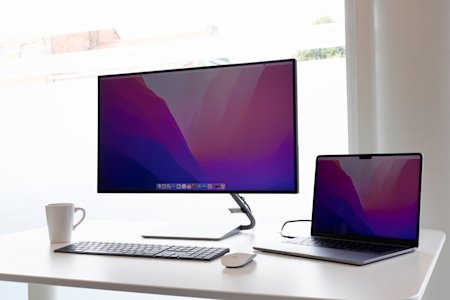In today's rapidly evolving digital landscape, remote work has become more than a trend—it's a necessity. As businesses strive to adapt to this new reality, the tools and technologies that facilitate remote access have been intensely scrutinized. Among the most discussed are Virtual Private Networks (VPNs) and remote access software solutions like Splashtop.
Understanding the nuances between these technologies is crucial for businesses seeking to ensure security, efficiency, and seamless user experiences for their remote workforce. While both VPNs and remote access solutions enable remote work, they operate in fundamentally different ways and offer distinct advantages.
This blog will examine the key differences between VPNs and remote access software, highlighting why Splashtop is the superior choice. By exploring aspects such as performance, user experience, security, and cost, we aim to clarify why many organizations are transitioning from traditional VPN solutions to more advanced remote access software.
Section 1: Understanding the Basics
What is a VPN?
A VPN is a technology that creates a connection over a network, such as the Internet. Businesses have used VPNs to allow remote employees to access internal company resources, such as files, applications, and intranets, as if they were directly connected to the company's local network.
Key Features of VPNs:
Access Networks Remotely: VPNs enable employees to connect to their company's network from any location.
Privacy: VPNs can provide anonymity and prevent third parties from tracking online activities by masking the user's IP address.
Common Use Cases:
Remote Work: VPNs allow employees to access company resources from home or while traveling.
Bypassing Geo-Restrictions: VPNs can be used to access content that is restricted to specific geographic locations by masking the user's true location.
Despite these benefits, VPNs come with several limitations, including potential latency issues, complex setup processes, and the risk of exposing the entire network if a single connected device is compromised.
What is Remote Access Software?
Remote access software, such as Splashtop, allows users to control a remote computer or server over the internet as if they were physically present at the remote location. This software enables users to access files, run applications, and perform tasks on the remote system with the same functionality as on-site.
Key Features of Remote Access Software:
Direct Control: Users can interact with the remote desktop, including using applications and managing files, as if they were sitting in front of the remote machine.
High Performance: Remote access solutions are optimized to provide high-quality video and sound with minimal latency, even over long distances.
Security: Advanced security measures, such as two-factor authentication, device authentication, and end-to-end encryption, ensure that remote sessions are secure.
Common Use Cases:
Remote IT Support: IT professionals can troubleshoot and resolve issues on remote computers without being physically present.
Telecommuting: Employees can access their work computers from home or while traveling, maintaining productivity without compromising on performance.
Collaboration: Teams can collaborate on projects by accessing shared resources and applications on a central remote server.
Remote access software like Splashtop addresses many of the limitations of VPNs by providing a more streamlined, efficient, and secure remote work experience.
Section 2: Comparative Analysis
Performance and Speed
VPN: VPNs route your internet connection through a server, adding extra steps to your data's journey, which often results in increased latency and slower speeds. This is particularly problematic when dealing with large files or resource-intensive applications. The performance degradation is due to the additional encryption and decryption processes, as well as the distance between the user and the VPN server.
Remote Access Software: Remote access software like Splashtop is designed to offer high-performance remote connections with minimal latency. Splashtop optimizes for smooth and fast access, even for high-definition video and resource-intensive applications. Users can expect a seamless experience, comparable to being on the local machine, without the lag typically associated with VPNs.
User Experience
VPN: Using a VPN requires users to navigate the network to find and open the files or applications they need. This process can be cumbersome and confusing, especially for non-technical users. Additionally, the setup and connection processes can be time-consuming and may require technical support.
Remote Access Software: Remote access software provides a more intuitive user experience. With Splashtop, users can directly access and control their remote computer as if they were sitting in front of it. Features like multi-monitor support, file transfer, and remote printing enhance usability and productivity. The straightforward interface and quick connection process make it accessible even for those with limited technical knowledge.
Security
VPN: VPNs can expose the entire network to potential risks if a connected device is compromised. Once a user gains access to the network, they can potentially access all its resources, increasing the risk of malware spreading across the network.
Remote Access Software: Splashtop employs robust security measures to protect data and devices. Features such as two-factor authentication, device authentication, and end-to-end encryption ensure that only authorized users can access the remote systems. This reduces the risk of unauthorized access and protects the network from potential threats. Additionally, Splashtop’s zero-trust security framework adds an extra layer of security by independently verifying each access attempt.
Ease of Use and Deployment
VPN: Setting up a VPN can be complex and requires technical expertise. Any changes to the network or server settings can disrupt VPN access, requiring ongoing maintenance and support. The process of scaling a VPN solution to accommodate more users can also be challenging and resource-intensive.
Remote Access Software: Remote access software like Splashtop is easy to deploy and manage. The installation process is straightforward, and the intuitive interface lets users start quickly. Splashtop’s solution is scalable, making it easy to onboard new users without significant additional effort. The Splashtop Connector simplifies access to internal networks without needing a VPN, further reducing complexity.
Scalability and Cost
VPN: VPN solutions can be expensive to implement and maintain. They often require dedicated hardware, extensive configuration, and continuous updates to ensure security. The costs can escalate quickly, especially when scaling to accommodate a larger workforce.
Remote Access Software: Splashtop offers a cost-effective and scalable solution. Its pricing plans are competitive, with options for volume licensing to reduce per-user costs. The software-based solution eliminates the need for expensive hardware and minimizes maintenance costs. Businesses can easily scale their remote access capabilities as needed, ensuring a smooth transition for growing teams.
Conclusion
In the debate between VPNs and remote access software, it is evident that while VPNs have served as a traditional solution for remote access, they come with several limitations that can hinder performance, security, and user experience. VPNs often introduce latency, require complex setups, and expose entire networks to potential risks if a single device is compromised.
On the other hand, remote access software like Splashtop offers a superior alternative. Splashtop excels in providing high-performance, low-latency connections, ensuring a seamless user experience that mirrors being on-site. Its robust security features, including two-factor authentication, device authentication, and end-to-end encryption, provide peace of mind by safeguarding remote sessions against unauthorized access and potential threats.
By choosing Splashtop, businesses can ensure a more efficient, secure, and user-friendly remote work experience, allowing employees to remain productive from anywhere without compromising on performance or security.
Try Splashtop Now for Free
Ready to experience the benefits of Splashtop for yourself? Try Splashtop for free today and discover why it’s the preferred choice for remote access over traditional VPN solutions.





